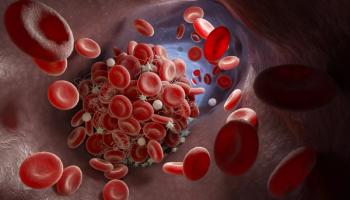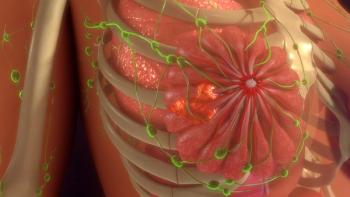
Liquid Biopsy May Help Predict Relapse Risk in Patients with Advanced Melanoma
Patients with stage 3 melanoma who had one or more circulating tumor cells were found to relapse sooner, providing physicians with an important biomarker to treat the likelihood of relapse.
Circulating tumor cells (CTCs) are associated with early relapse in patients with stage 3 melanoma and could be useful to determine a patient’s risk for relapse, according to research published in Clinical Cancer Research.
A form of liquid biopsy, CTCs are cells from a primary tumor that shed into the blood vessels and are carried throughout blood circulation. They can then be detected with a blood draw to inform a patient’s diagnosis. Although CTCs are known to be detected in patients with melanoma, researchers weren’t sure of their significance to the disease until recently.
“Our findings are significant, given that there is a need for blood-based biomarkers to guide clinical decision making for stage 3 melanoma patients,” explained Dr. Anthony Lucci in a press release from The University of Texas MD Anderson Cancer Center, the institution behind the study. “There currently are no blood tests available to help doctors accurately tell which patients are likely to relapse, and should be given therapy, and which are low risk, and could be observed.”
One blood draw was collected from 243 patients with cutaneous melanoma and researchers assessed if CTCs were present. Then they compared relapse free survival between the patients who presented one or more CTCs versus those with none.
Over half of the patients were given adjuvant therapy — additional therapy given after the initial treatment of the cancer — but any type of adjuvant therapy administered did not have a significant association to whether researchers found one or more CTCs.
At least one CTC was found in 37% of the patients studied and researchers learned that one or more CTCs were significantly associated with a decreased relapse survival within six months of detection.
“A blood-based biomarker that identifies those at high-risk for disease relapse can potentially add important prognostic information that simply cannot be accessed with the advent of the new, limited node dissection protocols,” the researchers wrote.
Within six months, 21 of the 90 patients with at least one or more CTCs relapsed compared with 12 of the 153 who did not present CTCs. At the full follow-up period, 43 of the 90 patients who had at least one or more CTCs relapsed compared with 56 of the 153 patients who had no CTCs. In addition, patients with CTCs were associated with relapse in nearly five years.
For both patients and physicians, this means detecting one or more CTCs will allow them to treat for the likelihood of relapse in stage 3 melanoma in patients that are at high risk. Moreover, incorporating CTCs as a biomarker for relapse could spare patients with a low risk of relapse from side effects associated with further adjuvant therapies.
“In current practice there is no clear consensus regarding adjuvant systemic therapy for patients with node-positive melanoma,” the researchers concluded. “Thus, information on circulating tumor cells and early relapse provides a basis for future clinical trials of adjuvant treatments and enhanced imaging in those patients at the highest risk for relapse.”





